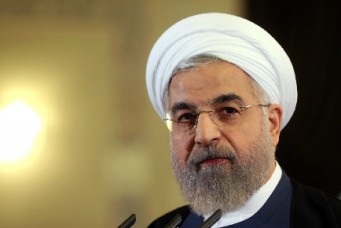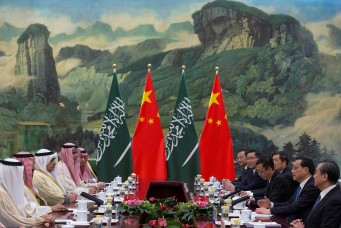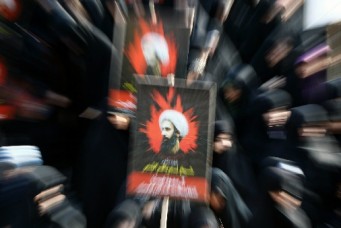The Iranian-Saudi Petrochemicals Competition
As sanctions ease on Iran, it hopes to expand its petrochemical exports, putting it in direct competition with Saudi Arabia over emerging markets.
Beyond proxy wars in Yemen and Syria, Iranian–Saudi competition could also stretch into the economic realm as Iran comes out from under sanctions and Saudi Arabia takes on more economic reforms. The two countries will compete economically in the global petrochemicals market even though the Organization of Petroleum Producing Countries (OPEC) reached an agreement to freeze oil output at current levels. Sanctions relief and decreased feedstock prices have allowed Iran, the Middle East’s second-largest petrochemicals producer, to engage with its archrival Saudi Arabia, the Middle East’s largest low-cost producer, in a bigger competition over petrochemicals and polymers markets.
Polyethylene—alongside other polymers that are made out of petrochemicals—has extensive uses that range from the production of cars and electric insulators to fibers and an array of consumer goods. Iran and Saudi Arabia, who produce and export polymer products abroad, are seeking investments to expand production and exportation. The development of the petrochemicals industry will enable them to produce more value-added products that can help other domestic sectors—such as cosmetics, pharmaceuticals, and paint—that need specialty chemicals. Riyadh’s position remains strong in global petrochemical markets, yet more efficient production and greater anticipated output in Iran will mean that Saudi Arabia’s powerhouse industry will come under increasing pressure. But both countries will face this pressure in the upcoming decade as more supply comes from the United States and other countries.
The global automotive industry, including the rising production of green cars, is one of the vigorous drivers of demand for petrochemical products and high-performance polymers, especially in low-cost producing regions in Asia. Reportedly, automotive plastics consumption is foreseen to grow globally from 7.1 million tons in 2012 to 11.3 million tons by 2018, at an anticipated rate of 8 percent per year. However, China’s automotive market, which is the biggest globally, is projected to grow less robustly after 2020. Less vigorous demand for polymers in China’s increasingly saturated market, in the short term, will leave Iran and the Gulf Cooperation Council (GCC) countries in an expanding cut-throat competition over maintaining or increasing their profit margins. Emerging markets in South Asia, such as India, are more promising for the Gulf region’s petrochemicals producers. But the competitiveness of Iran and the GCC countries’ petrochemical exports in emerging markets rely on the price of the feedstock, the input material that is used to produce petrochemical products. With the steep fall in oil prices since mid-2014, the competitiveness of European and Asian producers’ petrochemicals increased vis-à-vis Gulf producers due to the decreasing price of crude-oil-indexed naphtha feedstock.
According to a McKinsey report from April 2014, the GCC region entered a natural gas shortage in 2015, making ethane, their primary feedstock, more expensive to use. Because the GCC countries endeavor to expand their petrochemical production capacity, they will also seek to diversify toward additional feedstocks such as naphtha. This shortage can partially explain the 2015 surge in Saudi Arabia’s oil production, because the refining process also produces higher levels of associated natural gas. Moreover, Riyadh has embarked on projects to increase its natural gas production. Nevertheless, as Riyadh cut subsidies in its 2016 budget, ethane feedstock price doubled. But even with the price hikes, ethane feedstock price in Saudi Arabia remains the most competitive in the Middle East.
However, since the sanctions relief, Tehran has begun planning mega-projects in its petrochemicals industry, which it considers vital to its economic diversification schemes, especially following the global oil price slump. Tehran is seeking to attract $60 billion to its petrochemical industry to more than double its capacity over the next decade. The Islamic Republic has been engaged in talks with leading energy corporations to upgrade the industry’s infrastructure and launch new production units. Saudi Arabia also continues its drive to attract foreign investment to its lucrative petrochemical industry as part of its 2030 vision to diversify its economy. This might harm Tehran’s own chances of securing investment for its refining sector, as Saudi Arabia’s comparatively transparent investment legal framework allows it to attract investors more than Iran. The trouble for Iran is that there may not be as much demand for petrochemicals by the time its market is ready to compete with Saudi Arabia’s. While the market can absorb surpluses, it might not be able to do so for long. To ramp up its production significantly, Iran needs investment and expertise in its petrochemicals sector—yet because the country’s legal framework is still opaque, this will take time and Iran’s petrochemicals production will increase just when the market starts getting saturated.
Though Iran’s petrochemical industry is showing clear signs of recovery in terms of quantity and value following partial sanctions relief, Iran still has more to do, which will depend on its return on investments. Over the last decade, petrochemicals (excluding condensates) expanded from approximately 23 percent of the value of Iran’s non-oil exports in the Persian year of 1386 (2007–08) to 30 percent in 1391 (2012–13), averaging 34 percent growth during this period. After two years of sanctions, the value share of petrochemicals grew to 39.6 percent in year 1393 (2014–15), and the revenues of petrochemical exports saw a 25 percent increase in the first five months of 2016.1 Despite relative improvements in the industry, the lack of investments and lagging output after sanctions will turn Iran into an importer of a number of petrochemical products in the near future so it can revitalize several petrochemicals-consuming industries and non-oil export sectors.
While Iran has enormously untapped reserves of natural gas, it faces a number of challenges in using this to increase its ethane feedstock supply at a competitive price. There is increased domestic demand for natural gas (for residential consumption) in wintertime. Moreover, as Iran attempts to project its power geopolitically in the Middle East, its natural gas exporting schemes are expanding. Consequently, Iran’s ability to expand its petrochemical industry will rely on its ability to ramp up natural gas production to match this projected demand.
Notwithstanding the promising outlook, Iran’s ability to expand in the global petrochemicals market depends on many factors. Internally, capital investments in the energy sector will help reduce Iran’s persistent double-digit unemployment. But political uncertainty on the domestic level in Iran might be the most challenging obstacle to attracting investors. Iran must also maintain a stable monetary policy and fix the stumbling banking system to attract foreign direct investment to the sector. And with the GCC countries’ major conglomerates expanding globally and implementing reforms in a bid to increase efficiency, Iran is facing an uneasy challenge. Moreover, as Iran has not yet gained membership in the World Trade Organization (WTO), it remains at a disadvantage vis-à-vis the GCC producers in global markets. But with the competition becoming fiercer between Iran and the GCC countries, the region’s players might sell petrochemical products in foreign markets, especially in Asia, for less than they do domestically. Therefore, over-relying on petrochemicals for export revenue might hurt Iran’s non-oil export growth if it does not achieve wider diversification in the long term.
This article is reprinted with permission of Sada. It can be accessed online here.
Tamer Badawi is a researcher specializing in the political economy of the Middle East and focusing on Iran. On twitter: @TamerBadawi1.





